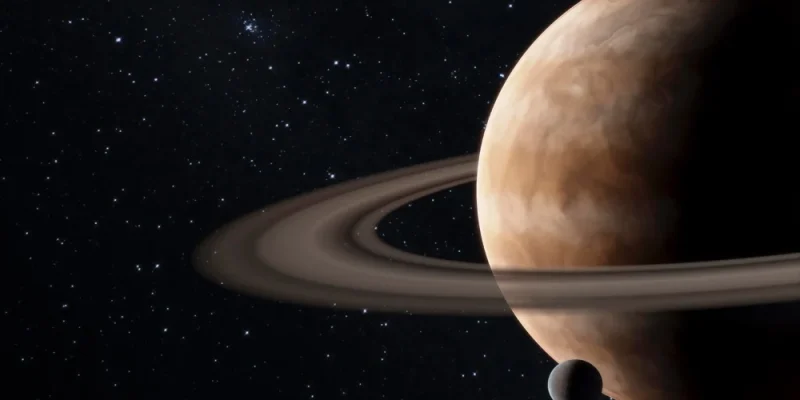Cosmic Diamonds: exploring Giant Diamond Planets beyond Earth
published: August 12, 2024
The cosmos continues to surprise us with its bizarre and fascinating structures. Among the most intriguing discoveries is a celestial object dubbed PSR J1719-1438B, a planet-sized diamond five times larger than Earth. This “diamond planet,” as it’s often called,offers a glimpse into the extreme conditions and exotic materials that exist beyond our solar system.
PSR J1719-1438B isn’t technically a planet in the conventional sense. Instead,it’s believed to be the remnant of a white dwarf star that has been stripped of its outer layers by a rapidly spinning neutron star,also known as a millisecond pulsar. What remains is primarily carbon, compressed under immense pressure, forming a giant diamond.
55 Cancri e: The Super-Earth with a Diamond Heart?
Adding to the intrigue of diamond-rich worlds, NASA’s James Webb Space telescope made waves last year with its observations of 55 Cancri e, a “super-Earth” exoplanet located approximately 41 light-years away. This exoplanet is almost twice the width of Earth and boasts a mass about nine times greater.Its size and mass alone make it a significant subject for planetary scientists.
55 Cancri e completes a full orbit around its star, 55 Cancri A, in a mere 17 hours. This proximity results in extreme surface temperatures, soaring to approximately 4,400 degrees Fahrenheit (2,400 degrees Celsius). The intense heat likely creates a surface dominated by liquid lava,presenting a decidedly inhospitable surroundings.
However, recent observations suggest that 55 Cancri e may possess a secondary atmosphere, possibly formed by gases released from volcanic activity on its lava-covered surface.This discovery indicates that the planet has undergone considerable geological activity despite the extreme temperatures.
One of the most captivating aspects of 55 cancri e is the hypothesis regarding its composition. Research indicates that at least one-third of the planet’s mass may be composed of diamond. The surface may be covered in diamonds and graphite, instead of the water and silicate rocks commonly found on Earth. Such a composition would challenge existing models of planetary formation.
implications for Planetary Science
The existence of PSR J1719-1438B and the potential diamond composition of 55 Cancri e force us to reconsider our understanding of planetary formation and composition. Hear in the U.S., researchers at institutions like MIT and Caltech are actively developing new theoretical models to explain the existence of these exotic worlds. These models incorporate extreme conditions of pressure, temperature, and chemical composition that were previously considered outliers.
These discoveries also have implications for the search for habitable planets. While diamond planets are unlikely to harbor life as we certainly know it, studying their formation and evolution helps us understand the range of possible planetary environments and the factors that contribute to habitability. As Dr. [Hypothetical Astrophysicist’s Name], a researcher at the Harvard-smithsonian Center for Astrophysics, explains:
“Understanding the extremes helps us better define the boundaries of what’s possible. By studying these bizarre planets, we can refine our search for Earth-like worlds and potentially discover new environments that could support life.”
Dr. [Hypothetical Astrophysicist’s Name], Harvard-Smithsonian Center for Astrophysics
Practical Applications and Future Research
While mining diamonds in space remains firmly in the realm of science fiction, the research into these exotic planets has practical applications. the study of high-pressure physics and material science, driven by the need to understand the conditions within these planets, can lead to advancements in materials technology here on Earth. For example,research into superhard materials could lead to the development of new cutting tools,abrasives,and protective coatings.
Future research will focus on obtaining more detailed observations of 55 Cancri e and other exoplanets. The James Webb Space Telescope will continue to play a crucial role, allowing scientists to probe the atmospheres of these planets and search for signs of specific elements and molecules. ground-based observatories are also being upgraded with new instruments that can measure the reflected light from exoplanets,providing further insights into their composition and structure.
One particularly exciting area of research is the development of new techniques for simulating the extreme conditions found within these planets. By recreating these conditions in the lab, scientists can study the behavior of matter at extreme pressures and temperatures, providing valuable data for refining our theoretical models.This research is not just about understanding distant worlds; it’s also about pushing the boundaries of our scientific knowledge and developing new technologies that can benefit society as a whole.
The future is Bright (and Possibly Diamond-Encrusted)
The discovery of diamond planets like PSR J1719-1438B and the ongoing investigation of 55 Cancri e highlight the incredible diversity and complexity of the universe. While these worlds may seem distant and alien, they offer a unique chance to expand our understanding of planetary science and push the boundaries of human knowledge.As technology advances and our observational capabilities improve, we can expect even more surprising discoveries in the years to come. The future of space exploration is bright, and who knows, it might even be diamond-encrusted.
considering the unique formation of diamond planets, do you foresee any other exotic planetary compositions awaiting discovery, and what kind of technology advancements would these findings drive?
Interview: exploring the Exotic World of Diamond Planets with Dr. Aris Thorne
Archyde News Editor: Welcome to Archyde News, Dr. Thorne. It’s a pleasure to have you. we’re fascinated by the recent discoveries of “diamond planets” and their implications for our understanding of the cosmos. Could you start by explaining what exactly a diamond planet is and how they form?
Dr. Aris Thorne: Thank you for having me. It’s an exciting field! A diamond planet, in the truest sense, is a celestial body primarily composed of carbon, crystalized into diamond under immense pressure. They usually form from the remains of white dwarf stars that have had their outer layers stripped away. Essentially,the core left behind,under extreme conditions,becomes a vast,planet-sized diamond.
Unveiling PSR J1719-1438B and 55 Cancri e
Archyde News Editor: The article mentions PSR J1719-1438B and 55 Cancri e. Could you tell us more about these specific examples and what makes them noteworthy?
Dr. Aris Thorne: Certainly. PSR J1719-1438B is almost entirely carbon, compressed under incredible pressure, which means it’s essentially a giant diamond in space. It’s orbiting a neutron star! Then we have 55 Cancri e, often dubbed a “super-Earth” because it’s substantially larger than our planet. While not confirmed, the evidence suggests a substantial diamond composition. It orbits its star in just 17 hours, leading to extreme surface conditions.
The Implications for Planetary Science
Archyde News Editor: What are the key implications of these discoveries for planetary science and our broader understanding of the universe?
Dr. Aris Thorne: These findings revolutionize our understanding of planetary formation. Diamond planets challenge our existing models,forcing us to consider a wider range of possible compositions and extreme environments. They also push the boundaries of habitability. Even though life as we know it is unlikely on these worlds, studying their formation and evolution helps refine our search for habitable planets.
Practical Applications and Future Research
Archyde News editor: besides expanding our knowledge, are ther any practical applications that could arise from studying these diamond worlds?
Dr. Aris Thorne: Absolutely.While space mining is a distant dream, the research into extreme physics and material science has tangible benefits. Understanding how matter behaves under immense pressure could lead to advancements in superhard materials, possibly creating better cutting tools, abrasives, and protective coatings right here on earth.
The Future of Diamond Planet Exploration
Archyde News Editor: What are the next steps in researching these fascinating objects, and what can we expect to discover in the coming years?
Dr. Aris Thorne: The James Webb Space Telescope and future ground-based observatories are key. We’ll focus on analyzing atmospheres of exoplanets, searching for specific elements and molecular signatures.Scientists are also developing new techniques to simulate the extreme diamond planet conditions found on these exoplanets. I anticipate more surprise exoplanet discoveries, possibly revealing different compositions than we anticipate, which further drives our exploration and research.
Archyde news Editor: Dr. Thorne, this has been incredibly insightful. Thank you for sharing your expertise! Now, I’d like to ask a thought-provoking question for our readers: Considering the unique formation of diamond planets, do you foresee any other exotic planetary compositions awaiting discovery, and what kind of technology advancements would these findings drive?
Dr.Aris thorne: Thanks for having me. It’s been a pleasure!







